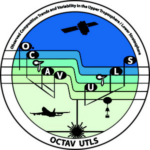Activity leaders
Peter Hoor
Johannes Gutenberg University, Mainz, Germany
Gloria Manney NorthWest Research Associates, Socorro, New Mexico, USA New Mexico Institute of Mining and Technology, Socorro, New Mexico, USA
Luis Millán
NASA Jet Propulsion Laboratory, Caltech, CA, USA
Scientific Steering Committee:
Adam Bourassa (USASK, Canada), Harald Bönisch (KIT, Germany), Rob Damadeo (Nasa, LARC, USA), Michaela Hegglin (U. of Reading, UK), Daniel Kunkel (JGU Mainz, Germany), Thierry Leblanc (JPL, USA), Nathaniel Livesey (JPL, USA), Irina Petropavlovskikh (NOAA/CIRES, USA), Gabriele Stiller (IMK-ASF, Germany), Susann Tegtmeier (GEOMAR, Germany), Valerie Thouret (LA/CNRS, France), Christiane Voigt (DLR, Germany), Kaley Walker (U. Toronto, Canada)
Activity description
The distribution of trace gases in the Upper Troposphere and Lower Stratosphere (UTLS) shows large spatial and temporal variability, caused by competing transport, chemical, and mixing processes near the tropopause, as well as variations of the tropopause location itself. In addition to large-scale dynamical processes, small scale dynamics and mixing occur, both of which strongly affect quantitative estimates of the impact of radiatively active substances, including ozone and water vapour, on surface temperatures, and complicate diagnosis of dynamical processes such as stratosphere troposphere exchange (STE). The incomplete and potentially incorrect description of dynamical processes at the tropopause and their effect on the UTLS composition contributes to uncertainties affecting near-time climate predictions. The community thus faces the challenge of optimally exploiting the existing portfolio of observations to better understand the chemical composition of the UTLS. Finding such an approach to optimizing use of current observations will help interpret past long-term changes in trace gas distributions in the context of the processes that control them.
This activity ultimately aims to improve the quantitative understanding of UTLS-composition along with the driving dynamical processes. This will help elucidate the role of the UTLS in climate and the impacts of STE processes on both air quality and the distribution of climate forcers. Achieving this goal requires a detailed characterization of existing measurements (from aircraft, ground-based, balloon, and satellite platforms) in the UTLS, including understanding how their quality and sampling characteristics (spatial and temporal coverage, resolution) affect the representativeness of these observations.
A key aspect of this activity is to develop and apply common metrics to compare UTLS data using a variety of geophysically-based coordinate systems (e.g., tropopause, equivalent latitude, jet-focused) derived from meteorological information from reanalysis datasets. This approach provides a framework for comparing measurements with diverse sampling patterns that were taken under similar atmospheric conditions and thus leverages the meteorological context to derive maximum information on UTLS composition and its relationships to dynamical variability.
The activity will produce recommendations for data comparisons in the UTLS region based on specific techniques/instruments. We will provide an assessment of gaps in current geographical/temporal sampling of the UTLS region that limit determining variability and trends, and suggest future measurement strategies that would help fill those gaps.
OCTAV-UTLS contributes to the research lead by a number of programmes (WCRP and GAW of WMO and IUGG), sponsored by the IO3C (International Ozone Commission) under the IAMAS (International Association of Meteorology and Atmospheric Sciences) and collaborates with other APARC activities, such as LOTUS, SSRIC, and A-RIP, with links to FISAPS.
Partners for this activity are: APARC, WMO and GAW.
Publications
Millán, L. F., Hoor, P., Hegglin, M. I., Manney, G. L., Boenisch, H., Jeffery, P., Kunkel, D., Petropavlovskikh, I., Ye, H., Leblanc, T., and Walker, K.: Exploring ozone variability in the upper troposphere and lower stratosphere using dynamical coordinates, EGUsphere [preprint], https://doi.org/10.5194/egusphere-2024-144, 2024.
Millán, L. F., Manney, G. L., Boenisch, H., Hegglin, M. I., Hoor, P., Kunkel, D., Leblanc, T., Petropavlovskikh, I., Walker, K., Wargan, K., and Zahn, A.: Multi-parameter dynamical diagnostics for upper tropospheric and lower stratospheric studies, Atmos. Meas. Tech., 16, 2957–2988, https://doi.org/10.5194/amt-16-2957-2023, 2023.
Jeffery, P. S., Walker, K. A., Sioris, C. E., Boone, C. D., Degenstein, D., Manney, G. L., McElroy, C. T., Millán, L., Plummer, D. A., Ryan, N. J., Sheese, P. E., and Zou, J.: Water vapour and ozone in the upper troposphere – lower stratosphere: Global climatologies from three Canadian limb-viewing instruments. Atmos. Chem. Phys., 22, 14709–14734, https://doi.org/10.5194/acp-22-14709-2022, 2022.
SPARC activity updates
SPARC Newsletter No. 55, 2020, p. 17: The third SPARC OCTAV-UTLS meeting, Thierry Leblanc, Luis Millán, Peter Hoor, and Irina Petropavlovskikh
SPARC Newsletter No. 53, 2019, p. 27: Report on the second SPARC OCTAV-UTLS meeting, Peter Hoor, Irina Petropavlovskikh, Luis Millán, Daniel Kunkel
SPARC Newsletter No. 50 , 2018, p. 10: Report on the first SPARC OCTAV-UTLS meeting, Boulder, CO, USA, 18-20 July 2017, D. Kunkel, P. Hoor, I. Petropavlovskikh, and G. L. Manney.
Meetings
(see https://octav-utls.net/meetings)
- Bern, Switzerland, ISSI meeting, April 2024
- Bern, Switzerland, ISSI meeting, February 2023
- Table Mountain, CA, USA, March 2020
- Mainz, Germany, November 2018
- Boulder, USA, July 2017

